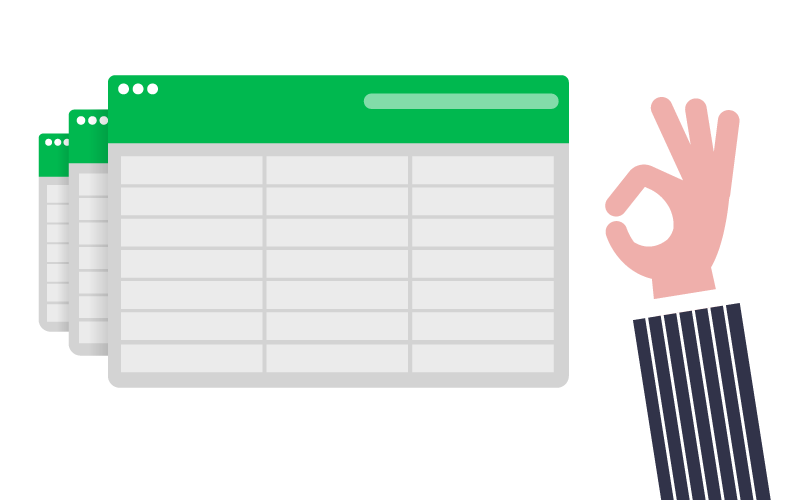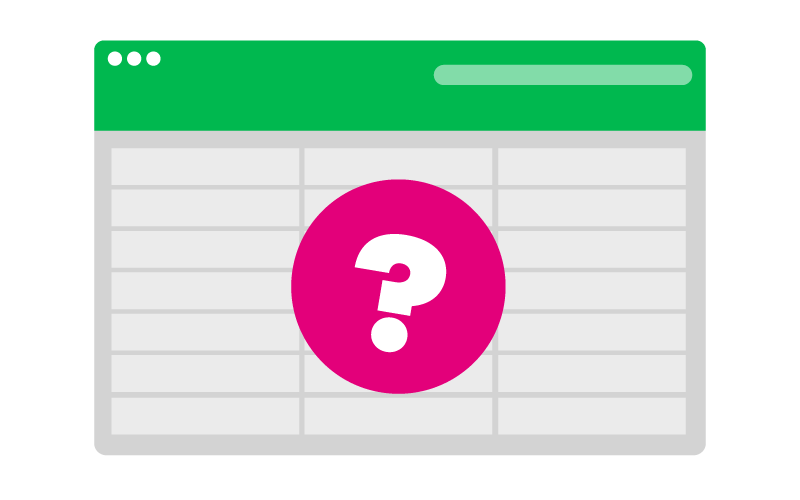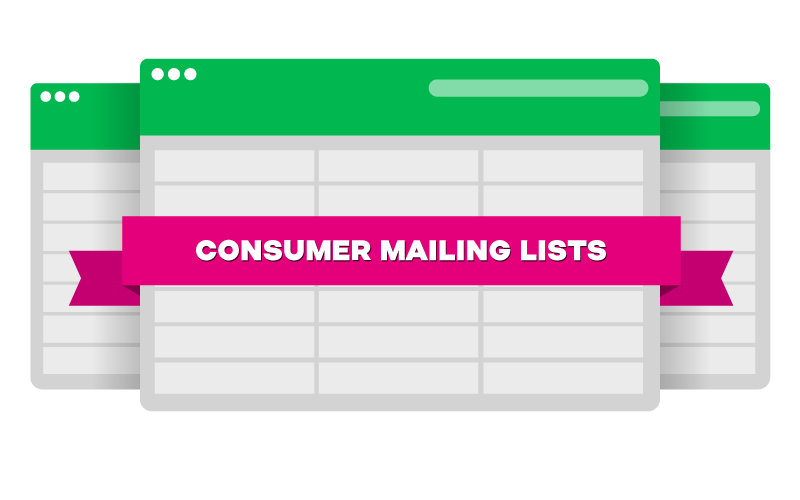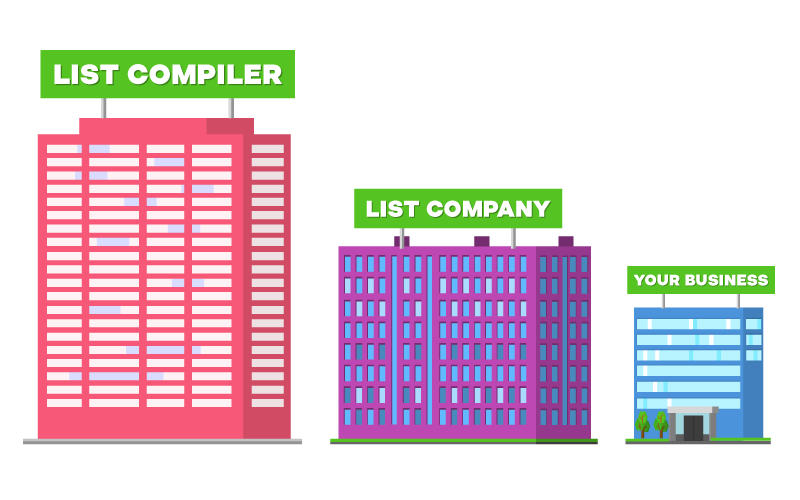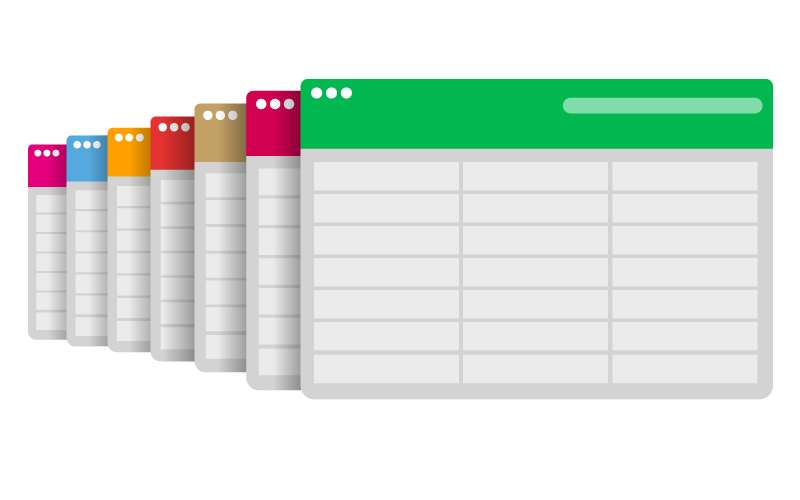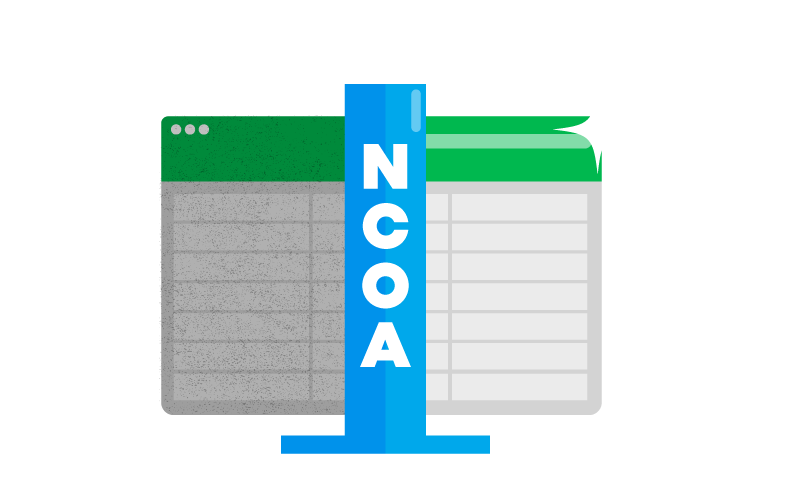Direct Mail Mailing Lists: The Definitive Guide (2024)
By Joy Gendusa
Your mailing list is an extremely important element of your direct mail marketing campaign...
In fact, I'd go as far as saying your mailing list can either MAKE or break your campaign’s success!
That’s why I laid out in plain black and white how to select the best mailing list for your marketing plan, and use it to generate leads (and sales) for your business.
Here you go!
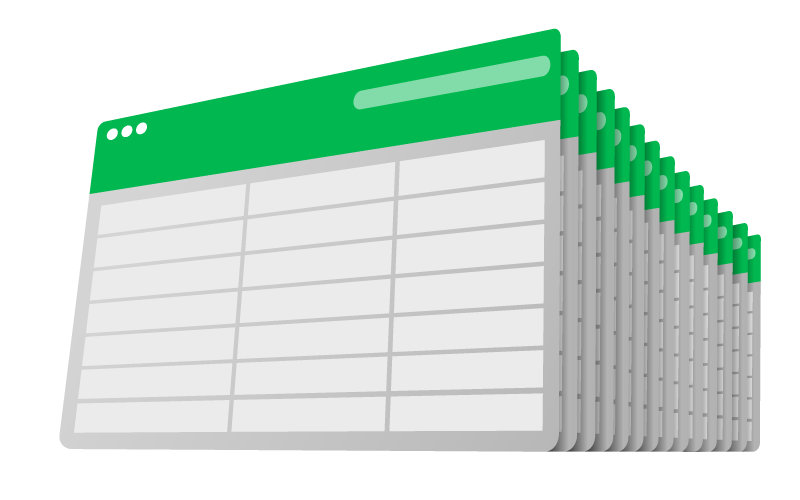
Contents
There are 3 main groups of people that you should target with your marketing, and each one needs a marketing message specific to them. You want your marketing recipient to read your message and say,
“Hey! That’s PERFECT for me.”
Therefore, your first step to a successful direct mail campaign is defining WHO exactly your mailing needs to reach in order generate LEADS and sales.
In order to create a steady inflow of leads — so you actually grow your business with enough new customers — the 3 groups your mailing lists need to target are these:
Group # 1: Your House Customer List
In other words:
Your customers! The exact people who have already purchased from you, which is why they are SO important.
If they bought once, they are likely to buy again.
After all...
Marketing to your existing customers should be happening regularly. You can mail postcards to your customer mailing list offering them special discounts ONLY they’re eligible for because they’re valued customers.
This type of marketing makes your customers feel valued. It also enables you to create sales from a list that you already have on hand.
So download your list of customers — with names and addresses — from your contact database (or save an Excel spreadsheet if that’s your contact organizer), and there you have it! Your first mailing list.
Group # 2: Your House Prospect List
Most likely you have a list of prospects who have inquired about your products and/or services.
This group has expressed some interest in your business, but hasn't made the decision to "go for it" yet.
But guess what:
They’ll be the group most likely to respond to a special marketing offer you advertise on your direct mail piece because they’ve ALREADY reached out to you with some level of interest.
You just need to make your special offer tantalizingly GOOD.
With a killer special offer on your postcard, you can mail 3 times to this list and generate some leads!
Otherwise, this list of prospects just sits on your computer (what a waste!). So export your prospect list, and organize it into a mailing list instead.
Group # 3: Your Super Targeted Mailing List
This 3rd and final group of people is composed of prospective buyers who’ve never purchased anything from you — nor have they inquired about your business.
The likely reason they haven't contacted you is because they don't even know you exist — YET.
Targeted mailing lists are typically what business owners think of when they imagine a mailing list they’re going to send direct mail to.
If your marketing list is properly selected AND cleaned of error (which I discuss in later chapters) — and you make an offer that any reasonable person will find very, very difficult to refuse — then your response rate will be high.
By understanding the needs of these 3 basic groups, you can craft relevant, effective marketing messages on your postcards — and other marketing materials — for each group.
Plus:
If you market repetitively to each group, you will create a larger base of customers and new prospects alike, and factually grow your business with consistent fresh leads.
FREE Report:
How to choose the right targeted mailing list
Like I alluded to in Chapter 1, you can create your OWN direct mail lists using Group #1 and 2 from above...
Meaning, organize your lists of current customers and prospects, and there you have it —
Mailing lists you can send postcards to!
Remember —
You need to be marketing to your current customers.
After all:
It costs far LESS money to keep a customer than it does to go out and generate a new one.
Log that one away — it's basically marketing GOLD.
And good news:
Your customers are likely to buy from you again since they already gave you their money — plus, the second (or third) sale is often much easier to make than the initial first.
Now, there are 3 key rules to follow when marketing to your existing customers:
- Collect ALL your customers’ contact information
- Definitely don’t market to your customers like prospects
- Don't allow your promotional designs to become stagnant
These bullet points are so chock-full of useful data that I’m dedicating the next chapter entirely to them...
Rule #1: Collect ALL your customers’ contact information
It sounds like a no-brainer, but you’d be surprised at how many companies ignore information from their customers. The more information you have about your customers, the more likely you will be able to get in touch with them next time you run a special or want to remind them it's time to order more products or services.
Rule #2: Definitely don’t market to your customers like prospects
While pre-scripted letters and generic emails may be easier for you, don't make the costly mistake of treating your customers like prospects. It’s unflattering and bad form on your part. They've spent money with you — treat them appropriately.
To avoid this debacle, make sure you differentiate in your contact database (even if that’s a spreadsheet) between people who have placed an order in the past and people who have not. Customers want to feel like you are paying attention to them and when they have placed a few orders with you and are still getting your "10% Off for First Time Buyers" postcards, they tend to feel unappreciated. Remember, if someone doesn't qualify for an offer you are sending out, don't send it to them.
Rule #3: Don't allow your promotional designs to become stagnant
When mailing to customers or prospects you’ve already spoken to, you need to mix things up a bit. Sending the same designs over and over to customers is fine for a while but soon it will cause them to lose interest.
Your mailings should be attention-grabbing and informative — not stale and boring. If you recently started offering a new service, a postcard letting your database know about it would be a smart move.
The main point is to keep your company in front of customers to keep them interested in your business.
If you send the same postcards to your customer database and your customers lose interest, you’re just wasting your money on postage —
Plus, your postcards won't get the attention that you want.
Every time someone contacts your business, you absolutely NEED to collect their contact information. If you make a rule out of this, you will, over time grow a huge list of prospects who are interested (to some degree) in your business’s products or services.
This is invaluable to your marketing because it creates an instant direct mail marketing list —
And one you didn’t have to pay extra for.
When a prospect responds to your marketing and contacts your business, you need to have a system in place that’ll allow you to capture their identity and contact information.
New lead source information needs to be compiled somewhere so it can be calculated and analyzed. I have found that a great way to do this is with New Caller Sheets.
FREE Download:
Grab that New Caller Sheet here
Now onto the exciting stuff...
Now, before you jump in to buy mailing lists for your direct mail campaign, you want to know WHO you’re mailing to.
This may require a bit of research depending on your business, so consider the follow questions before you spend 1 dime on mailing lists...
Look at your current customer base and ask yourself:
- What characteristics do these people have in common?
- Where do they live?
- Are they all married (or single)?
- Why did these folks buy from MY business (vs. from my competitor)?
I recommend you conduct some of this research on your own, but also when you consult with a mailing list provider — who’d ideally be a legit marketing company, too — they can help you nail down a direct mail marketing list that’ll match up with both your business and special offer.
To make sure you’re getting the BEST direct mail marketing list for your campaign, here are some tips so you’re an expert when you go to purchase mailing list data...
Google the keywords consumer lists, and you'll get a ton of companies willing to sell you consumer mailing lists.
What, exactly, IS a consumer mailing list?
A consumer mailing list contains home addresses and/or email addresses of consumers — people who buy products either from brick and mortar retailers or online. These lists are in turn used to sell products and services directly to individuals and families.
Using such a marketing list, you'll be able to break prospects down by any of these factors:
- Age
- Income
- Gender
- Whether they rent or own their home
- Home value
- And even MORE variables!
Some mailing list companies will include these options (they call them "selects") in their price — others will add on a penny or 2 per record for this super-targeted data.
BE CAREFUL. You need to research WELL when you’re looking to buy mailing lists.
You want FRESH data. Your consumer direct mail marketing list is the most decisive aspect of your direct marketing campaign —
Meaning, it can make OR break your campaign’s ability to generate leads and sales for your business.
If you buy outdated or inaccurate information, you are wasting time and money following dead-end leads.
That’s why I outline the exact questions you need to ask of your mailing list service provider...
How often is your data updated?
If it isn't monthly - move on.
Do you guarantee deliverability?
The answer should be "yes." (Deliverability is the ability of the mail piece to be successfully delivered to the prospect.)
What amount of deliverability do you guarantee?
You should agree to NO less than 90% deliverability.
Will you refund postage on bad addresses as well as the cost of each bad record?
This is a tough one... 10% is the max on bad addresses as an industry standard. Over the 10%, I do refund postage on the bad addresses here at PostcardMania, as well as the cost of the bad address records. I think you'll be hard-pressed to find mailing list companies that will do this, but you might as well ask.
Can I use the list over and over again?
Again, there will be an up-charge for this because quality companies will charge for unlimited use of a list. These compilers are constantly updating their data, and there is a cost to that activity. When a random mailing list provider says, "Sure, use it as much as you want," I'm always suspicious. WHO compiled that mailing list and when? In my experience, all the major mailing list companies charge more for unlimited usage.
If it's a "specialty list" — meaning everybody on the mailing list has back pain or rides a unicycle or loves painting pottery in their spare time — it's important to ask how the list is compiled.
Meaning, how do they know everyone on the mailing list has back pain? Did they buy it from a chiropractor?
Be suspicious with specialty lists, ask a LOT of questions. Don't just believe it because they proclaim to be a mailing list service expert.
There are mailing list companies, and then there are mailing list compilers. Well, WHO compiles this data?
There aren't very many answers to this question actually.
InfoUSA is a great compiler. Their data is fresh. They have a great website to get your list counts from, which can be found at www.infousa.com.
However, if you're planning on using PostcardMania for your postcards, you may want us to quote the list for you. Because of the quantity we purchase and because mailing lists are not our main product (we’re partial to postcards), we don't need to mark them way up, so our pricing usually comes in MUCH lower than InfoUSA's retail pricing.
But, whether you buy the data from them, us, or any other list broker — insist that the data is fresh and accurate, or your money back.
Realize though:
You will always get some undeliverables — this is normal! Businesses and people move all the time.
Don't just buy the cheapest direct mail mailing list out there, though.
Make sure you get the right answers to the questions I listed in Chapter 7.
Remember:
Postage is the most expensive part of any mailing, and if the mailing list is old, and you get more than 10% undeliverable returns...
You are LITERALLY throwing money away.
Now take a look at these...
There are a few little-known targeted mailing lists worth knowing about when you deal with a mailing list provider.
Subscriber Lists
One effective way to target an audience with a shared interest is with a subscriber list.
For example, are there magazines your market could be reading?
Let’s say you’re a jeweler...
Do you imagine there are magazines people who like buying high-end jewelry subscribe to?
Most likely, yes!
FREE Mailing List Count:
Click here to get your free mailing list count
Magazine publishers will normally rent out their subscriber mailing list.
Before you commit though, remember to ask the mailing list provider if they'll allow you to use the mailing list over and over again. Often times they have a one-time usage clause in their contract. If so, look elsewhere for another company...
Using a list only one time is basically useless.
You need to mail to your direct mail list not just once, but over and over (and over) again. If a mailing list provider only allows you to mail to it ONE time, and you have to repurchase it for additional use, it may get VERY expensive and fast.
Then again — if the list is that good — it may be worth it. You'll be the judge of that. It really depends on your ROI (Return on Investment).
Teaming Up With Affiliate Companies
The key to working with a mailing list provider is not to reinvent the wheel. I spent years (and a small fortune) learning the ropes from scratch. You don't have to.
Today, more and more companies are willing to offer up the lists they've worked so hard to build — but... for a price.
Here are a few examples of this in action:
Say you're a mortgage broker:
If you're selling mortgages and work with a particular title company, they will sometimes GIVE you their list of clients with address information, loan amount, and length of loan. Sometimes even the lender is included. They, in turn, want all your loans closing with them so, in exchange, they will share the client data they have for your direct mail campaign.
Now say you're a florist:
You may want to use the recent mailing list of a bridal boutique. Maybe you can provide flowers at a trunk show in exchange for a monthly direct mail list of new gown customers. Maybe there’s a caterer you sometimes work with that will trade customer lists with you.
The point is this:
You need to get creative. Who may want to use your customer list and also has a good product or service but doesn't compete with you? Trade with them.
Business-to-Business Lists
When we talk about customers, it's important to define whether you’re selling to individuals or businesses. The field of businesses selling to businesses, or B2B, is more popular than ever.
Let's say you’re a software-design company specializing in custom databases for a variety of businesses. Well, you're not going to promote to EVERY single business. You need to choose the types of businesses that benefit from the type of database you offer.
Maybe you've worked with dental offices or insurance agencies in the past. There are SO many different types of both that it can be difficult to prioritize...
Fortunately, there is a way to narrow it down and find the right types of companies to promote to. For example, look for specific business types at www.census.gov/epcd/www/sic.html and find out their SIC (Standard Industrial Classification System) codes for these businesses — which I define further below...
B2B:
What is an SIC Code?
An SIC code is minimally a four-digit numerical code that stands for Standard Industrial Classification. It is issued to businesses by the U.S. government in order to organize and identify all the different industries in the nation. That way data can be compiled and analyzed about these industries and the government will have uniformity of statistical data collected by the various federal and state agencies and private organizations.
Reading an SIC Code
The first two digits of the code identify the major industry group, the third digit identifies the sub-industry group and the fourth digit identifies the exact industry.
For example:
| Digits | Industry |
|---|---|
| 36 | ELECTRONIC & OTHER ELECTRIC EQUIPTMENT |
| 367 | ELECTRONIC COMPONENTS & ACCESSORIES |
| 3672 | PRINTED CIRCUIT BOARDS |
If you see a number "9" in the third or fourth digit position of the SIC code, it means it is a miscellaneous industry "not elsewhere classified" (NEC). These miscellaneous groups are not made up of similar primary activity groups. They are grouped together and treated as a separate industry.
Why am I telling you all this?
Mailing list compilers/companies gather data about a business and one of the ways to sort them is by SIC code. Sure, if you want ALL businesses in a certain gross volume range, then you won't need to know the SIC code.
Don't leave it to the mailing list provider to figure all this out for you. They don't know your business the way you do. Compilers NEVER ask questions to determine if the marketing list you're ordering is what you really need to have success with your campaign. You need to understand this material so your mailing list is actually comprised of businesses likely to purchase your product or service, and not just some variance of that industry.
This is VITAL.
Like I said before, your direct mail list will make or break your campaign.
The more understanding YOU have about how these marketing lists are compiled and where the data comes from, the more power you will have over the results of your campaign.
Opt-In Lists
This is something you hear people talking about all the time in marketing, but what does it really mean? An "opt-in list" is a list that someone puts themselves on voluntarily. They may sign up for a newsletter within a certain industry and answered "yes" to wanting to receive offers or information from affiliates of that company. An affiliate would be any company they sold their list to. It was the business transaction that affiliated them.
Like any mailing list, an opt-in list can be a valuable source of information if used correctly.
The key to all of these direct mail lists is that they are just information; you have to make the best out of that information by marketing to these mailing lists repeatedly.
Once you’re mailing to your direct mail lists, you may begin to see postcards come back with "Undeliverable as Addressed" or "Forwarding Order Expired" on them.
Here’s why:
Every time you mail to an address and that prospect has moved or cannot be found for any reason, you have just paid for postage with NO possibility of generating a response and a lead.
Obviously, it's a pretty big waste of money to continue to mail to these addresses, but what do you do about it?
You could simply go into the list of names that you purchased and delete the returns. No more bad addresses, no more wasted postage, right? That is one option, but there is a better way to handle the situation — and it’s MUCH faster!
The U.S. Postal Service has an NCOA (National Change of Address) System that a limited number of mailing list companies and marketing businesses are licensed to access. These companies are able to take the list that you have purchased, or compiled yourself, and check it against the U.S.P.S. system.
You will receive a report that will let you know if anyone on your direct mail list has moved, gone out of business, or even if the zip code that contact was in was changed by the Post Office itself. Along with the report, you will receive a new copy of your mailing list that has been cleaned and updated...
Meaning, all the addresses are verified as good as can be, and you’re set to mail to them!
Plus, the cost for having your list checked is very economical ($50 for up to 10,000 addresses), and this process will allow you to keep getting your message out to as many people in your list as possible —
Limiting your returned direct mail pieces and ensuring you get the best bang for your postage buck!
You have 3 choices when faced with a direct marketing list that needs cleaning:
Spend hours deleting every single return that you receive from your mailing list, waste $175.00 or MORE in postage and printing every time you mail to that mailing list or...
Have the list checked by an NCOA service and get back in touch with customers that may have moved, for around 3.5 times less than the cost of mailing again without checking it.
By the way, there will be records that just can't be found through NCOA, and these you should delete.
That’s it! If you’ve made it to the end, you now have quite a bit of information on mailing lists, and you know how to create, select, and buy one for your next direct mail campaign.
Want a FREE mailing list count? Get one here PLUS 1,000 records for FREE if you decide to buy a mailing list from us.
Best,
Joy



